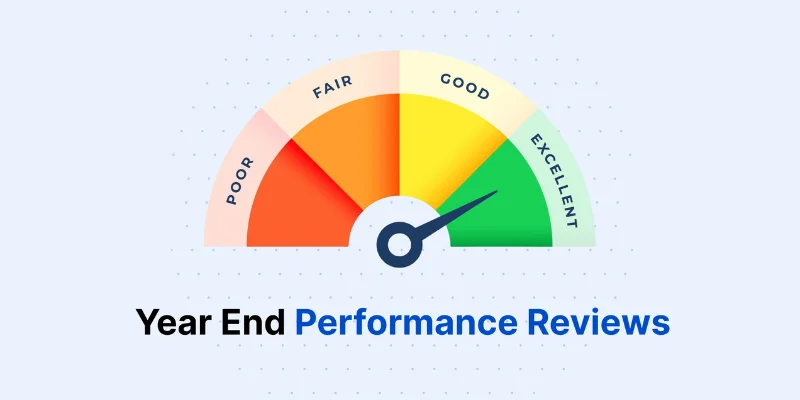Bradford Factor Meaning, Definition, Formula, and Use in HR
The Bradford factor, also known as the Bradford formula or Bradford score is an important key performance indicator that measures absenteeism based on the frequency of time off. HR teams use this employee attendance score to better understand the absenteeism trends among employees across various teams and departments.
This score received its name in connection with the Brandfort University research. The basis of the research is that longer but less frequent absences are more beneficial for employee engagement and productivity than shorter and more frequent ones.
How to calculate Bradford formula?
To calculate, use the formula, B = S²×D
Where B represents the Bradford Factor score, S stands for the total instances of absence, and D signifies the total number of days absent in a given period.
Bradford Factor Formula Example
For example, if an employee is absent 3 times and the total number of days missed is 7, their score would be calculated as follows:
B = S² × D
B = 3² × 7 = 9 × 7 = 63
So, the score in this case would be 63.
Bradford Factor Pros and Cons
Pros:
The Bradford Factor helps reduce HR’s workload by automating absence tracking. As an effective absenteeism metric, it makes absences easy to track and manage. It also discourages employees from taking frequent short-term leaves, which helps minimize disruptions in the workplace.
Cons:
While helpful, this formula can be rigid and doesn’t show the real reasons behind absences. This can lead to unfair treatment, especially for those with health issues. It may also create a negative image of employees who take time off for valid reasons, leading to possible misunderstandings or even discrimination.
Frequently Asked Questions
Q1. | What is the Bradford Factor? |
| Ans. | The Bradford factor meaning is that it is an important key performance indicator to standardize and measure frequent absences at work. HR teams simply use this for tracking employee absences. |
Q2. | What is considered a high Bradford Factor score? |
| Ans. | A high score indicates that the impact of employee absence rate is negative on the organization. Short term absences create a high Bradford factor score. A score above 100 indicates the beginning of the negative trend of absenteeism, while a score above 200 calls for immediate attention in the organization. |
Q3. | What is a good Bradford Factor score? |
| Ans. | HR professionals generally consider a score below 50 to be good for average employees. It indicates less frequent absences for an individual employee. |
Q4. | Is the Bradford Factor fair? |
| Ans. | It is debatable as it does not consider the reasons behind absences. This absence score can potentially penalize employees who may have legitimate reasons for time off. However, HR can use the score fairly when they apply it with a clear absence policy and consider the reasons behind absences, not just the numbers. |
Q5. | Can the Bradford Factor be automated? |
| Ans. | Yes, HR teams can automate the Bradford score. Many HR software solutions have the features to automatically calculate their score based on employee absence data. This automation removes the need for manual calculations and acts as an effective absenteeism tracking tool. Thus making it easier and faster to monitor employee absences and spot potential problems. |
Q6. | Why is the Bradford Factor used in HR? |
| Ans. | HR teams use it to measure and manage employee absenteeism. It focuses on how frequently an employee is absent. Frequent short-term absences can be more disruptive than longer ones, and this factor helps spot those patterns. |
Q7. | Does the Bradford Factor consider the reason for absence? |
| Ans. | No, this does not consider the reason for absence. |
Q8. | What actions can HR take based on Bradford Factor scores? |
| Ans. | HR can take various actions based on the scores, such as simply monitoring attendance. HR can also have informal conversations or offer support. If the score is moderate to high, then the HR can issue formal warnings. In serious cases, HR can take disciplinary action. All in all, as part of effective absence management in HR, the goal is to identify absence patterns early, understand the reasons behind them, and take fair, appropriate steps to address any issues. |
Q9. | Can the Bradford Factor be biased? |
| Ans. | Yes, this factor may show bias, even though it relies on a formula. It can unfairly affect employees with valid short-term absences due to health issues, disabilities, or physically demanding jobs. This becomes especially true when employers use it without considering broader employee performance metrics. |
Resources
Explore how HR trends 2026 are shaping workplaces and employee experiences.
Learn why HR metrics are key to better engagement and smarter decisions.
See how year-end reviews improve performance and organizational growth.





